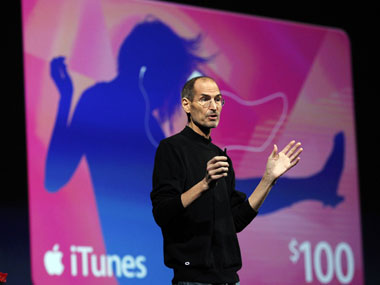For anyone who was waiting with bated breath for the keynote address of the Apple Worldwide Developers Conference (WWDC) on Monday, it was, in in the end, more than a little ho-hum.
Apple CEO Steve Jobs emerged from medical leave to welcome the crowd at the beginning of the keynote, and then re-appeared later on to officially announce the company’s much-anticipated new service offering, a data storage and syncing system called iCloud. But multiple blogs and websites had already stolen Jobs’ thunder by describing the service with a good deal of precision by culling information from unnamed sources.
[caption id=“attachment_21433” align=“alignleft” width=“380” caption=" Up in the iCloud is the centre of your digital life. Beck Diefenbach / Reuters"]  [/caption]
So Jobs took the stage essentially to confirm that iCloud is a personal server in the sky for all Mac devices, allowing users to save files, photos, music and eventually other media in the cloud. The service, which is available now for music files, will automatically sync a user’s Mac devices so that music purchased on iTunes from a computer will also be accessible via an iPhone or an iPad. The basic service will cost nothing, but it will cost $25 a year to store music files from CDs or other sources in the iCloud.
Syncing did seem to provide most of the appeal to the service. “Keeping these devices in sync is driving us crazy,” Jobs told the audience. “We have a great solution for this problem. We are going to demote the PC to just be a device. We are going to move the digital hub, the centre of your digital life, into the cloud.”
Impact Shorts
More ShortsSoftware was the star of the show of WWDC 2011, and unlike in previous years, there were no new models of iPhones or other hardware devices to show off (a new iPhone is expected this fall).
Apple also unveiled Lion, its latest operating system update. Among other things, Lion allows users to mimic the way they’d use an iPhone touch screen by expanding the number of finger commands that can be used on a laptop trackpad.
There’s also new mobile software, called iOS 5, to be had for iPhones and iPads. A newsstand for newspapers and magazines that you subscribe to on an iPad are among the new features, as is improved integration with Twitter (for example, you can now tweet photos directly from an iPhone).
All of this left some tech observers underwhelmed. One blogger, for example, called the keynote a “dull event” that ultimately offered a “boring announcement.”
SVB going it alone in India
On the finance front, California’s Silicon Valley Bank (SVB) is reportedly looking to score banking licences in China and India to grow its global venture capital business.
“In China, we’ve announced a joint venture, and our goal is to get a banking licence there, and the same in India,” Greg Becker, the bank CEO, told Reuters. (Its joint venture partner in China, which is still subject to regulatory approval, is Shanghai Pudong Development Bank.)
However, in India, Becker said “our strategy is to go-it-alone.”
SVB provides financial services to technology, life science, private equity, and wine industry clients. It has had a presence in India since 2001, with its non-banking financial holding company opening offices in Mumbai and Bangalore.
India’s quickly growing VC market has also been of interest to private equity firms such as KKR & CO, Warburg Pincus, and Carlyle Group.


)

)
)
)
)
)
)
)
)



